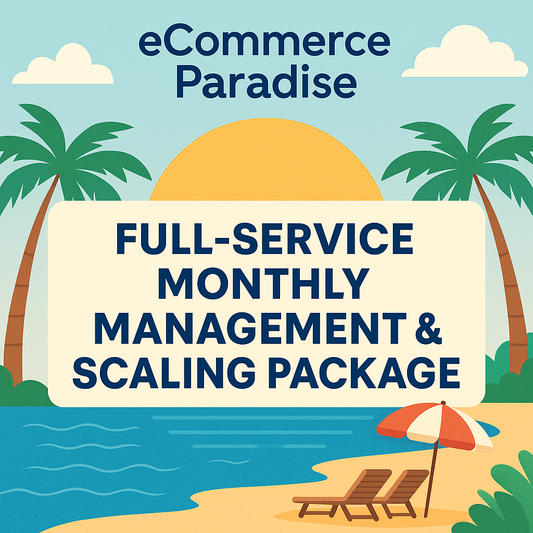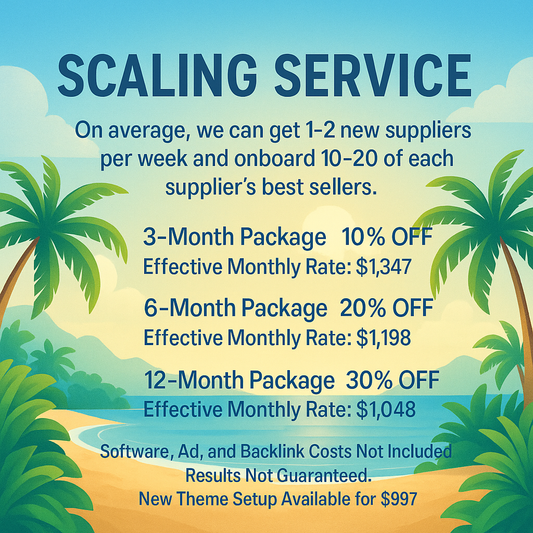How to Do On-Page SEO for Your Shopify Store (Step-by-Step Guide)
Optimize your pages to rank higher, drive more traffic, and convert better.
Once your keyword research is done and your site structure is set up right, it’s time to zoom in.
That’s where on-page SEO comes in — the process of optimizing individual pages on your Shopify store so that Google (and real people) understand exactly what your content is about.
If you want to rank your product pages, collection pages, and blog posts — this is where it starts.
🧠 What Is On-Page SEO?
On-page SEO refers to the content and structure on your actual webpage that helps search engines determine:
-
What the page is about
-
How relevant it is to a search query
-
How helpful it is to users
It includes your:
-
Title tags
-
Meta descriptions
-
URLs
-
Content
-
Headings
-
Image alt text
-
Internal links
-
And more
When done right, on-page SEO helps you rank better, get more clicks, and convert more visitors into customers.
🔍 Why On-Page SEO Matters for Ecommerce
In ecommerce, every product and collection is its own opportunity to rank.
That means every page needs to be optimized individually — not just your homepage or blog.
If your pages are thin, duplicated, or missing key info — Google won't rank them. But if they’re rich with useful, keyword-targeted content, Google will reward you with free traffic over time.
✅ On-Page SEO Checklist for Shopify
Here’s a breakdown of what to focus on for every product, collection, and blog page:
1. Title Tag
This is what shows up in Google search results.
-
Include your target keyword near the beginning
-
Keep it under 60 characters
-
Make it compelling (think “Best Solar Kits for Off-Grid Living”)
Example:Complete Off-Grid Solar Power Kits | Free Shipping – Solar Kit Outlet
2. Meta Description
This is your ad in search results — use it to get clicks.
-
Include your keyword
-
Keep it under 155–160 characters
-
Highlight key features, pricing, shipping, guarantees, etc.
Example:Shop our top-rated solar power kits for off-grid homes. Free shipping, expert support, and easy setup included.
3. H1 Heading
-
Only use one H1 per page (usually the product or blog title)
-
Include your keyword
-
Subheadings (H2, H3) help break things up for readers and Google
4. Body Content
-
Use 150–300+ words on product pages
-
500–2,000+ words for blog posts
-
Include keywords naturally — don’t stuff
-
Talk about benefits, specs, use cases, FAQs, and common objections
-
Add bulleted lists, bolded features, and customer-centric content
5. Image Alt Text
Google can’t see your images — it reads the alt text.
-
Use short, descriptive phrases (e.g. “bluetti 3000W solar generator kit”)
-
Include keywords when appropriate
-
Helps with image search and accessibility
6. Internal Linking
-
Link products to related collections
-
Link blog posts to relevant products
-
Link collections to other categories or guides
-
Helps Google crawl your site and passes authority
7. URL Slug
-
Clean, short, and keyword-friendly
-
Use dashes, not underscores
-
Example:
/products/bluetti-3000w-solar-kit(✅) vs/item?id=93847623(❌)
8. Bonus: FAQs & Customer Reviews
-
Add 3–5 FAQ questions with answers on product/collection pages
-
Boosts relevance and dwell time
-
May qualify your page for FAQ schema in search results
✍️ Example: On-Page SEO in Action
Let’s say you’re selling a product called:
“Bluetti 3000W Off-Grid Solar Kit”
Here’s how you might apply on-page SEO:
-
Title Tag: Bluetti 3000W Solar Kit – Best Off-Grid Power System
-
Meta Description: Get reliable, off-grid power with this all-in-one 3000W solar kit. Ships free. Expert support included.
-
H1: Bluetti 3000W Off-Grid Solar Power Kit
-
Body Content: Explains what’s included, who it’s for, specs, benefits, installation
-
Alt Text: “bluetti 3000w solar power kit”
-
URL: /products/bluetti-3000w-solar-kit
-
Internal Links: Links to collections like /solar-generators and blog post “how to choose the best solar kit”
-
FAQs: “How long does it power a fridge?” “What’s included?” “Can I install it myself?”
🧠 On-Page SEO for Blogs
Blog posts follow the same format, but you can go longer and deeper.
Use your keyword in:
-
The title (H1)
-
The first 100 words
-
Subheadings (H2, H3)
-
Image alt tags
-
Meta description
-
Internal and outbound links
Pro tip: Use a tool like Surfer SEO or Yoast SEO to help optimize while you write.
📋 On-Page SEO Checklist Summary
-
Title tag includes keyword and is under 60 characters
-
Meta description is clear, keyword-rich, and under 160 characters
-
One H1 per page — and it includes the keyword
-
Body content is detailed, unique, and helpful
-
Keywords used naturally (not stuffed)
-
Images have alt text with relevant terms
-
Internal links point to related pages
-
URL is clean and contains target keyword
-
FAQs and reviews are added to boost content
📥 Want Help?
Doing this right takes time — but it’s absolutely worth it.
Coming up next:
➡️ How to Use Blogging & Content Marketing to Boost Your Shopify SEO


















